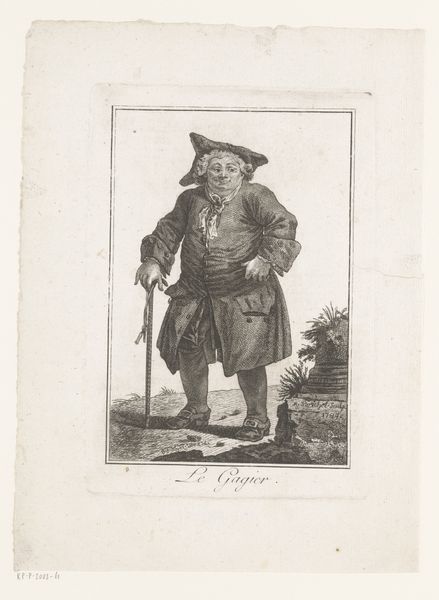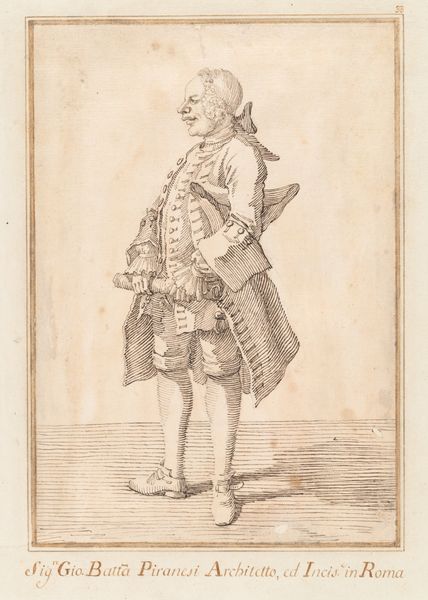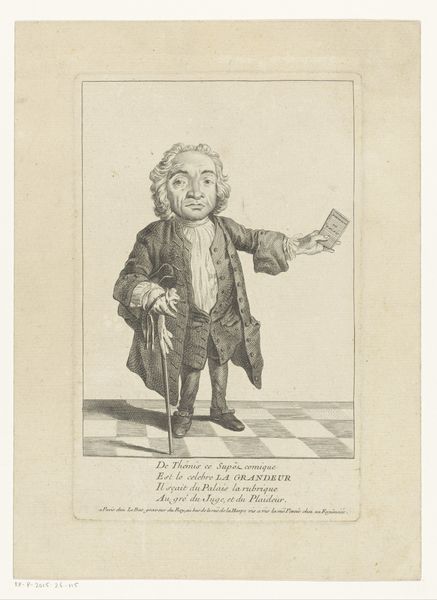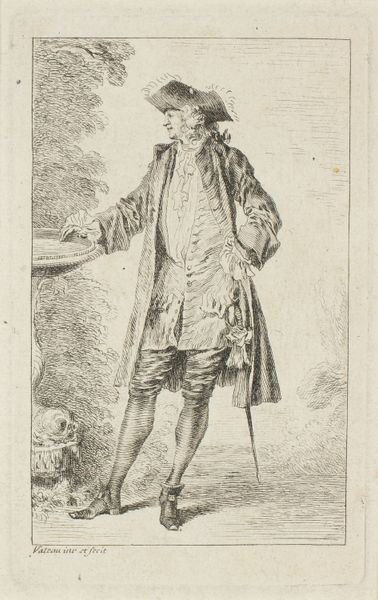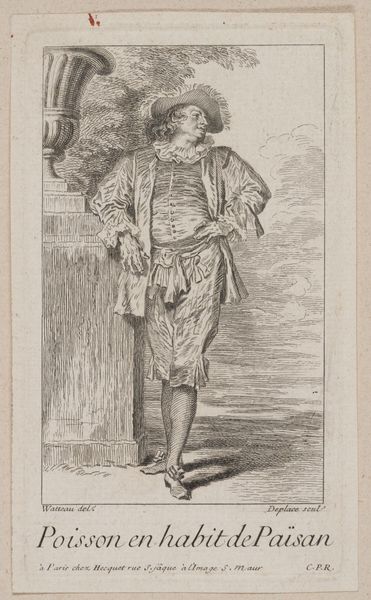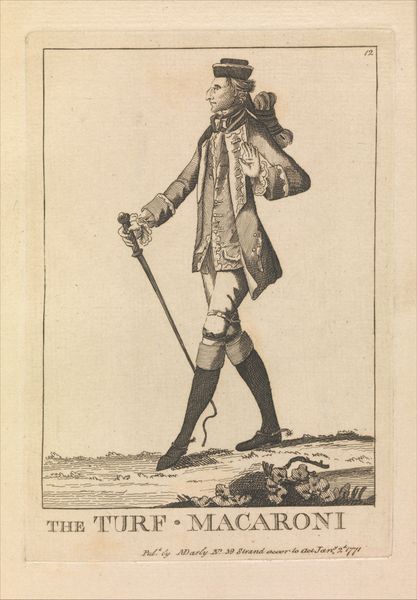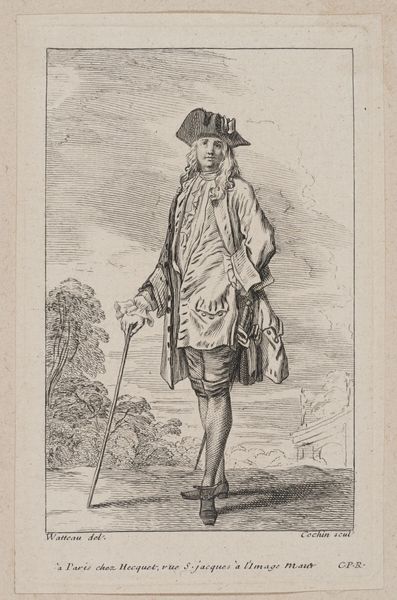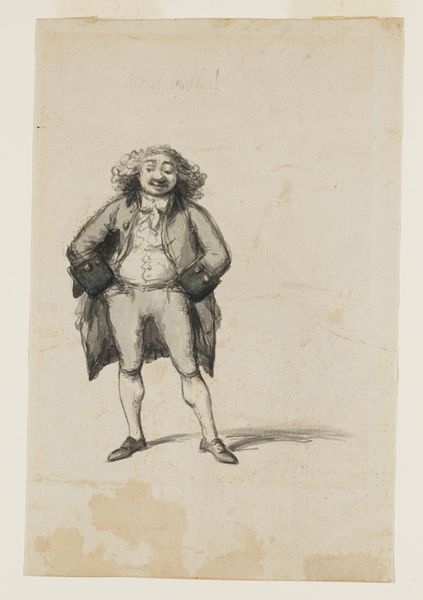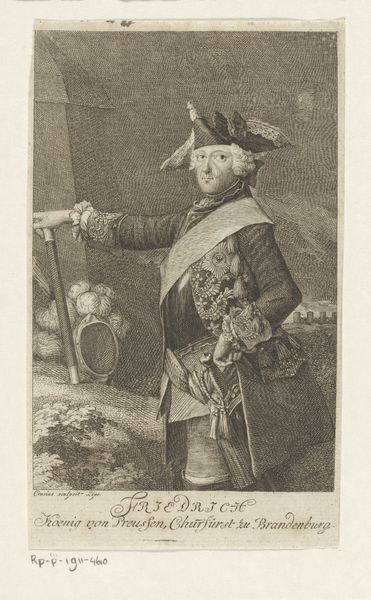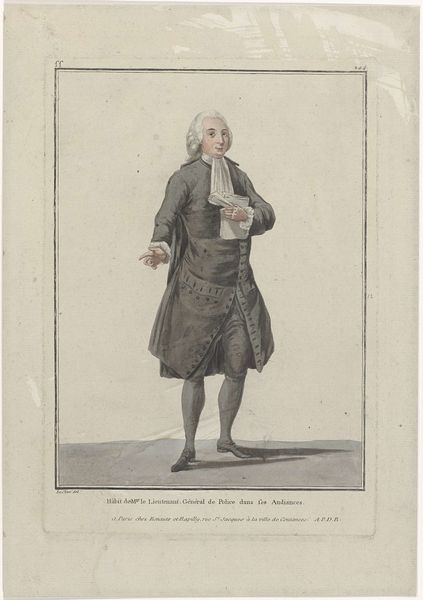
print, engraving
#
portrait
#
neoclacissism
# print
#
caricature
#
old engraving style
#
figuration
#
form
#
line
#
engraving
Dimensions: height 225 mm, width 167 mm
Copyright: Rijks Museum: Open Domain
Robert Brichet created this print of a standing man with a walking stick sometime between 1750 and 1850. It's a fine example of the kind of character study popular during the Enlightenment. Prints like these offer insight into the social mores and class distinctions of the period. Note the man’s attire: the powdered wig, tricorn hat, and walking stick were all signifiers of status. The print is titled "L'Inexorable," which hints at the figure's unyielding character. Perhaps Brichet is commenting on the inflexibility of the upper classes or the perceived arrogance of authority. The Rijksmuseum’s collection provides valuable context, allowing us to compare Brichet's work with that of his contemporaries. As historians, our task is to unpack these visual codes and explore the socio-political landscape that shaped their meaning. By studying fashion, literature, and political writings of the time, we can begin to understand the complex relationship between art and society. Art is never created in a vacuum. It’s a product of its time, reflecting and shaping the world around it.
Comments
No comments
Be the first to comment and join the conversation on the ultimate creative platform.
